F126 - possible cancellation - options and consequences
One Analysis of the F126 frigate project: Causes of the delay, cost risks and alternatives.
Shipbuilding at the turn of the century
Germany's largest naval construction project since 1945, the F126 frigate project, is facing considerable delays and cost increases: The delivery of the first frigate, originally planned for 2028, is likely to be delayed until at least 2031. The resulting critical capability gap at a time of heightened geopolitical tensions has sparked a debate about the possible cancellation of the billion-euro project and an exploration of different options. In view of the perceived threat from Russia, time is becoming a decisive factor. A reassessment will have to include consideration of bold alternatives - including the role of unmanned maritime systems.
The F126 - a precedent for procurement
The F126 frigate, also known as the Niedersachsen class, is intended to replace the ageing Brandenburg-class frigates (F123) and, as a multi-purpose combat ship - MKS 180, as it was originally designated - will be able to fulfil a wide range of missions, including global operations. The original order for four ships worth €5.5 billion was awarded to the Dutch Damen Shipyards Group in June 2020 following the first European tender (launched in mid-2015) against German competitors. By awarding the contract, Damen committed to generating a large part of the added value in Germany: The construction was to be carried out with the Hamburg shipyard Blohm&Voss, part of the Naval Vessels Lürssen Group (NVL), and regional German shipyards belonging to it.
By exercising the option for two further ships in June 2024, the total value of the order rose to around EUR 9.8 billion.
Serious problems with the IT interfaces and the transfer of construction plans between Damen Naval and the German subcontractors are said to be the main reason for the acute difficulties in the project. At least according to the official language. Mastery of the French Dassault software is essential for handling the design drawings in the shipbuilding companies - and this is causing difficulties. This requires extensive reworking both by the Dutch contractor itself and subsequent adjustments, particularly at the German shipyards.
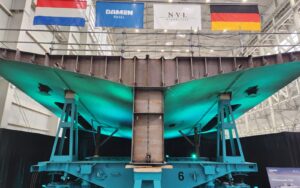
However, sluggish progress in the detailed design phase translates into the threat of a standstill in shipbuilding - resulting in a cascading delay in the construction programme until the individual ships are delivered. Officials speak of at least two years. In the meantime, insiders assume four years. Some members of the German parliament now consider the project to be a failure and are calling for it to be cancelled and for a national replacement solution to ensure the navy's ability to act.
However, the financial impact of a cancellation would be serious. Documents from the German Bundestag show that over 1.8 billion euros can already be traced as a cash flow in the context of the F126 project - a sum made up of actual expenditure for 2020, 2021 and 2024 as well as target estimates for 2022 and 2023. These funds usually include advance payments for planning, infrastructure or technology transfer.
The delay also has far-reaching consequences for Damen Naval itself. As interim payments from the client are contractually linked to the progress of construction work, these have been suspended for the time being. However, as the company had calculated on this income, this has resulted in an "acute financial emergency" at Damen Naval. According to reports from the Netherlands, government measures were already required to support the company financially. This is not only due to the F126 project, but also to other major Damen Naval orders, such as the planned sub-hunting frigates for the Netherlands and Belgium, which can only be realised by a solidly financed company. Cancelling the F126 project would not only mean considerable losses in the billions, but also serious reputational damage for Damen Naval. Moreover, cross-sectional effects on the European defence industry cannot be ruled out.
Did you miss the warning signals?
Were there any indications of the critical complexity of the project? In the 19th Armaments Report (editorial deadline April 2024, publication July 2024), technical delays in the IT interfaces between Damen Naval and the subcontractors were mentioned, but at the time it was still believed that these could be compensated for with existing time buffers. In retrospect, this assessment proved to be too optimistic. In retrospect, the industry's reluctance to advertise in specialist publications such as the Wehrtechnischer Report on the F126 published in September 2024, for example, could have been interpreted as an early warning sign of a lack of confidence in the smooth implementation of the project.
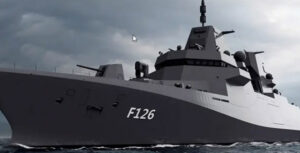
In response to an enquiry about delays and financial performance, the Federal Office of Bundeswehr Equipment, Information Technology and In-Service Support (BAAINBw) merely confirmed that the contractor had reported a delay in the delivery of the first ship. The contractor is working together with its subcontractors on a revised overall project plan. The BAAINBw takes delays very seriously, but also emphasises the high technical and organisational complexity of such major projects. In response, internal management and controlling mechanisms had been adapted, project management had been strengthened and closer coordination with industry had been promised. This unspecific statement also did not address specific questions about missed payments to German suppliers or the solvency of Damen - a statement that does not help to dispel the ongoing lack of transparency in this project.
Legal and political challenges would arise if the project were to be cancelled. Depending on the contract, parts of the payments could also be reclaimed, particularly if Damen Naval fails to fulfil its contractual obligations. Relevant cases from the defence industry show that reclaims can result in lengthy international legal disputes.
On the other hand, design plans, fuselage sections already started or equipment already provided could, if sensible and technically feasible, be adopted for other programmes (such as a modified F126/MEKO extension type).
In Wolgast, two aft construction sections were started and partially completed at the Peene shipyard.
Ways out of the situation
Option 1: Restart by German consortium
In view of the ongoing problems, there are increasing calls for the project to be cancelled. Members of parliament such as Bastian Ernst (CDU) have called for the contract with Damen Naval to be cancelled and for the project to be restarted under a purely German industrial consortium led by TKMS - together with Naval Vessels Lürssen (NVL) and GERMAN NAVAL YARDS. This option would not only strengthen the German shipbuilding industry, but could also lead to a consolidation of the shipyard landscape in Germany through mergers or takeovers.
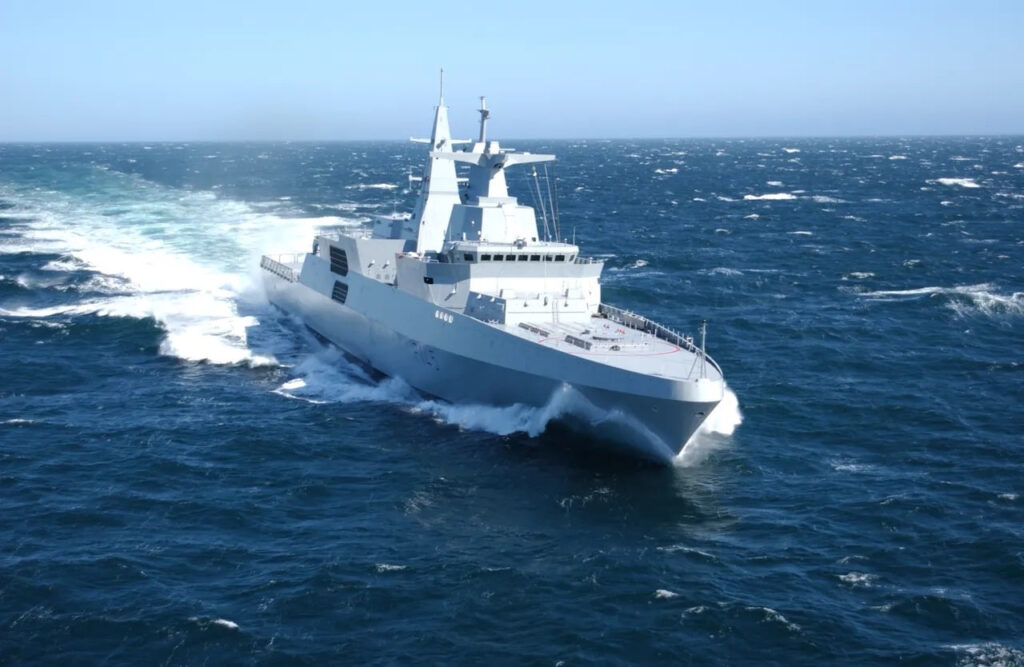
The answer to the question of whether a German consortium could continue the project in the event of Damen Naval's insolvency is complex. On the one hand, German industry has the necessary expertise, as demonstrated by the involvement of Blohm+Voss, Peene-Werft and German Naval Yards as subcontractors in the F126 project. On the other hand, TKMS, which was not selected in the competition for the F126, has proven frigate types such as the MEKO A200 in its portfolio, which could be adapted to the requirements from Berlin, Koblenz and Rostock. The challenge for TKMS would then be to simultaneously manage the F127 frigate construction programme, which the shipyard would like to build as general contractor. Which options the BMVg might favour is not yet publicly known.
Option 2: F127 as a high-end solution with a long start-up time
What if the F126 was dispensed with altogether? Parallel to the F126 crisis, the F127 frigate project is also progressing. These ships are designed to replace the F124 Sachsen class and are due to enter service from the mid-2030s. Their main task is state-of-the-art air defence, i.e. the engagement of air targets including a contribution to defence against ballistic and hypersonic missiles. With a displacement of around 10,000 tonnes and the integration of the American AEGIS combat system with 64 vertical launch cells (VLS), they will close a crucial capability gap.
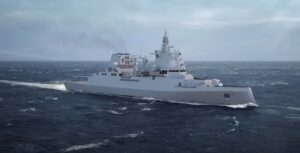
TKMS and NVL entered into a joint venture for the construction of the F127 in September 2024. The utilisation of the TKMS-owned shipyard in Wismar is intended to ease the pressure on other German naval shipyards. However, despite the political urgency and the creation of industrial conditions for an early start to construction in 2025, the F127 is not a quick solution. Its complexity and dependence on long-range items such as the AEGIS system mean that it will not be able to close the immediate capability gap created by the loss of the F126. In any case, there is a serious conceptual difference between the F126 (focussing on underwater operations) and the F127 (focussing on airborne operations).
Option 3: MEKO A200 as a pragmatic interim solution
A possible alternative to the Damen F126 would be the rapid procurement of MEKO A200 frigates. The proven and modular design from TKMS is already in service with various navies around the world. With a displacement of around 3,700 tonnes, it is significantly smaller than the F126 or the projected F127, but offers the potential for faster implementation. TKMS has already shown that these ships can be built in a relatively short time, which would enable a rapid expansion of the fleet.
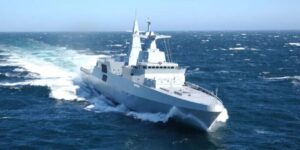
The MEKO A200 is suitable as a multi-purpose anti-submarine warfare frigate and can be equipped with sonar systems and torpedo launchers. Whilst not a complete replacement for the ambitious F126 design, it could provide a basic ASW capability faster than a delayed F126.
The decision in favour of the MEKO A200 would send a strong signal to the German naval shipbuilding industry.
Option 4: Innovation through unmanned systems
In view of the acute capability gaps and the long procurement cycles for manned large-scale platforms, unmanned systems are becoming increasingly important for the navy - and not just as a temporary solution. Unmanned aerial vehicles (UAVs), surface vehicles (USVs) and underwater vehicles (UUVs) offer a promising opportunity to close gaps cost-effectively and with less risk to human personnel.
Flying UAVs can be used for reconnaissance and surveillance (ISR: Intelligence, Surveillance, Reconnaissance) as well as search and rescue operations. Their operating costs are considerably lower than manned aircraft: an MQ-9B SeaGuardian, for example, costs around 5,000 euros per operating hour, compared to around 35,000 euros for a manned maritime patrol aircraft.
Floating UPSs are revolutionising naval warfare through reconnaissance, mine countermeasures, anti-submarine warfare and surface combat. Their ability to operate in dangerous environments and provide real-time intelligence is invaluable. The war in Ukraine has impressively demonstrated the combat value of disposable drones and accelerated their development. The prototype of the American "Sea Hunter" UAV is being built at a cost of 20 million US dollars, with operating costs estimated at 15,000 to 20,000 US dollars per day - a fraction of the cost of a frigate.
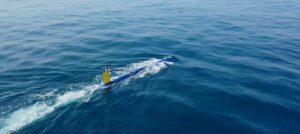
Submerged UUVs are designed for ISR, mine defence, anti-submarine warfare and oceanographic research. With lower costs and smaller size compared to manned submarines, they can also operate in extreme underwater environments. Models such as the REMUS 600 or the Leidos Sea Dart, which are available from as little as 150,000 US dollars per unit, enable mass production. The German Navy is already testing the BlueWhale UUV for anti-submarine defence and surveillance.
The NATO promotes the integration and interoperability of maritime drone systems. Annual exercises such as REPMUS serve as testing grounds for the cooperation of unmanned systems with manned units. The USA have also introduced new guidelines for rapid drone procurement to achieve "full integration of small UAS" by 2027 and to equip "every unit with low-cost, expendable drones". Overall, cost efficiency, risk reduction for personnel and rapid deployment capability make the modern drone an essential element of current naval warfare.
However, the integration of drones into the fleet is not without its challenges. These include the technically secure cooperation of the various systems with manned platforms, the development of robust command and control architectures, cyber security and the establishment of a clear legal and ethical framework for the use of autonomous weapon systems. These are challenges - but they must not be allowed to become obstacles!
From the frigate crisis to a technological awakening
For the already "battered" navy, this crisis surrounding the F126 project is a bitter brake on the way forward. For the ministerial armaments organisation and the German armaments industry, it is another "blow with the fence post"! On the way out of the crisis, neither the navy, the ministry nor the German shipyards must be harmed - we have no time now for a pointless search for culprits!
If a decision is actually made to cancel the project, this would be a serious blow to defence cooperation in Europe and could fundamentally jeopardise future major international projects - which is already implied by the imbalance at Damen. However, in the current threat situation and during Europe's current financial upheaval towards adequate equipment, this would be a completely misguided sign. The current, financially unimaginably extensive armaments programmes must not be allowed to disintegrate into hundreds of national penny graves, but need a cooperative, European approach.
The F126 case, which was "sent down a difficult path" (not to say "botched") a good decade ago in terms of defence policy, once again calls for an urgent, radical and courageous reform of military procurement processes in order to arrive at quick and sensible solutions. Of course, this also applies to the F127 frigate, whose programme should benefit significantly from an acceleration of the processes, but even if these large frigates are completed ahead of schedule, they certainly do not represent a solution to the current F126 problem. A simpler, national alternative programme such as MEKO A200 could build a pragmatic bridge when exiting the Damen Treaty in order to increase the German presence at sea in good time and secure basic capabilities for the navy. A solution that would be associated with financial, legal and industrial policy risks. There is a lot to be said in favour of a pragmatic solution that can be realised by German shipyards. The prerequisites would be a political consensus and the willingness to make difficult industrial policy decisions.
In the meantime, unmanned systems could be integrated into the fleet at an accelerated pace in order to bridge capability gaps. Vice Admiral Jan C. Kaack, Inspector General of the Navy, sees "Course 2025" as the way forward in a hybrid fleet in which large manned platforms operate synergistically with a growing number of autonomous systems. In addition to financial investment, this means a cultural shift towards greater agility and a willingness to take risks in military procurement.
Table.Security.Briefings reported on 16 July that the Chancellery had no position on the F126 issue - how could it? It would be premature to escalate to this level anyway, as the contractual and industrial policy procedure must first develop. And parliamentary opinion-forming, of course. Defence industry changes in the national and European shipyard landscape also require a certain amount of time to mature. However, there is no time to lose!
However, it would be good to support a pragmatic solution from the official and political side with self-confidence and courage.
hum, ajs
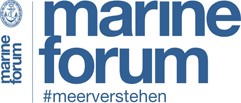
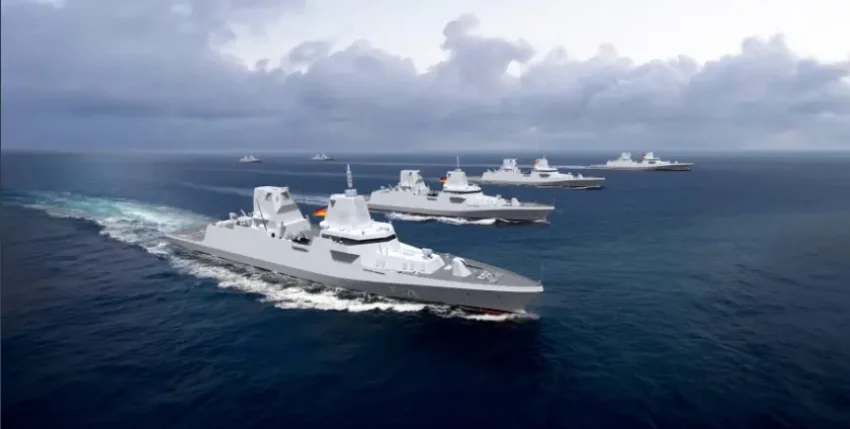







10 responses
Eighth Marine Forum,
In my opinion, a possible rescue attempt of the original F126 is very late and no guarantee but a high risk, a failure is unacceptable and irreparable. Also, for me, production has priority over politics.
So my suggestion:
Option 1 : Frigate A400AMD => A400ASM => F126
- The F127 Concept is already used for the base
- The sensors & processing systems intended for the F126 are being integrated, i.e. combat management system, radars, electro-optical systems, sonar, communication, navigation suite, electronic warfare and decoys. Normally these are already on order or in production (the long delivery time for the AEGIS is no longer an issue).
- You could also use the F126 drive CODLAD (option).
- The armament should be reconsidered (drones!).
- You could also decide on the number (option 01: 6 F127 ASW) or (option 02: 3 F127 ASW and 6 Meko ASW).
- The type designation F126 should be kept
Option 02 : 3 F126 and 6 Meko in parallel production
- The A210 and A300 concepts have already been considered (preliminary design) and can therefore be put into production more quickly. Denmark, Norway and Sweden (DNS) could also be interested in these concepts. Joint production with a proper division could speed up completion and reduce costs.
- The A210 is optimised for Australia, so it has to be optimised for Germany.
- Germany already has several experienced shipyards and if they work together, several ships can be built in parallel. And if DNS joins in, there will be several more experienced shipyards.
- In total, the 6 F126s come to 60,000 tonnes. The 6 A210 and the 3 F127 ASW also come to 60,000 tonnes and the 6 A300 and the 3 F127 ASW come to 66,000 tonnes, so there is not much difference in tonnage except that you now have 9 ships (1/3 W, 1/3 vG and 1/3 aG) at your disposal and you can divide them up more (the GIUK zone is not small).
- An ASW optimised F127 can retain 32 cells of a VLS and may also have space for Passive Towed Array, Active array sonar, LUUV, VTOL-UAV, ARCIMS USV, MCM UUV and Mission Modular 533mm heavyweight torpedo tube launchers.
- It's a big challenge, but we have to avoid a major conflict and that has absolute priority. That should motivate us.
- And please give the frigate minimal survivability against cheap drone swarms, so minimal "ready to fire ammunition". According to Damen F126 concept you have one Seasnake 27 for port and one for port, so you have 225 rds per 180° (let's forget the 12.7mm for a moment). With the Seasnake 30 (ABM) it's 147 per 180° (294 rds in total). Reloading during a drone swarm was already forgotten, so bye bye F126.
- My suggestion would be one Seasnake 30 (ABM) forward and one aft and one Skyranger 35 (ABM) in the mite and that for port and port, so 294 rds 30mm and 252 rds 35mm (546 rds total) per 180° (1092 rds total). You also need 2 of the 12.7mm per 180°. With 6 LMGs you can take up to 6 drones in parallel (6 zones) under fire.
Eighth Marine Forum,
In my opinion, a possible rescue attempt of the original F126 is very late and no guarantee but a high risk, a failure is unacceptable and irreparable. Also, for me, production has priority over politics.
So my suggestion:
Option 1 : Frigate A400AMD => A400ASM => F126
- The F127 Concept is already used for the base
- The sensors & processing systems intended for the F126 are being integrated, i.e. combat management system, radars, electro-optical systems, sonar, communication, navigation suite, electronic warfare and decoys. Normally these are already on order or in production (the long delivery time for the AEGIS is no longer an issue).
- You could also use the F126 drive CODLAD (option).
- The armament should be reconsidered (drones!).
- You could also decide on the number (option 01: 6 F127 ASW) or (option 02: 3 F127 ASW and 6 Meko ASW).
- The type designation F126 should be kept
Option 02 : 3 F126 and 6 Meko in parallel production
- The A210 and A300 concepts have already been considered (preliminary design) and can therefore be put into production more quickly. Denmark, Norway and Sweden (DNS) could also be interested in these concepts. Joint production with a proper division could speed up completion and reduce costs.
- The A210 is optimised for Australia, so it has to be optimised for Germany.
- Germany already has several experienced shipyards and if they work together, several ships can be built in parallel. And if DNS joins in, there will be several more experienced shipyards.
- In total, the 6 F126s come to 60,000 tonnes. The 6 A210 and the 3 F127 ASW also come to 60,000 tonnes and the 6 A300 and the 3 F127 ASW come to 66,000 tonnes, so there is not much difference in tonnage except that you now have 9 ships (1/3 W, 1/3 vG and 1/3 aG) at your disposal and you can divide them up more (the GIUK zone is not small).
- An ASW optimised F127 can retain 32 cells of a VLS and may also have space for Passive Towed Array, Active array sonar, LUUV, VTOL-UAV, ARCIMS USV, MCM UUV and Mission Modular 533mm heavyweight torpedo tube launchers.
- It's a big challenge, but we have to avoid a major conflict and that has absolute priority. That should motivate us.
- And please give the frigate minimal survivability against cheap drone swarms, so minimal "ready to fire ammunition". According to Damen F126 concept you have one Seasnake 27 for port and one for port, so you have 225 rds per 180° (let's forget the 12.7mm for a moment). With the Seasnake 30 (ABM) it's 147 per 180° (294 rds in total). Reloading during a drone swarm was already forgotten, so bye bye F126.
- My suggestion would be one Seasnake 30 (ABM) forward and one aft and one Skyranger 35 (ABM) in the mite and that for port and port, so 294 rds 30mm and 252 rds 35mm (546 rds total) per 180° (1092 rds total). You also need 2 of the 12.7mm per 180°. With 6 LMGs you can take up to 6 drones in parallel (6 zones) under fire.
The F126 debacle as an opportunity - a plea for a strategic fleet architecture
The disaster surrounding the F126 frigate is more than just another failed defence project; it is a strategic turning point for Germany and the German Navy. While the articles provided analyse the painful details of the delays, cost explosions and industrial policy distortions, the proposed solutions remain stuck in a reactive "either-or" mindset. In view of the dramatically changed security situation, it is not enough to simply plug the next capability gap. Germany now needs a bold, two-stage vision for its naval power that combines pragmatism with technological progress.
The options presented - a new start under German leadership, a sole focus on the F127, a pure MEKO-A200 interim solution or the isolated use of unmanned systems - each fall short of the mark. They either do not solve the acute time problem, create new capability gaps or fail to recognise the revolutionary potential of the technology.
It is time for a fifth option that combines the strengths of the existing proposals into a coherent overall strategy.
Option 5: The two-tier fleet - pragmatism now, dominance later
This option provides for a decisive reorganisation based on two complementary pillars:
1st immediate measure: Procurement of light frigates as the backbone of the Alliance's defence.
Instead of keeping the coma patient F126 artificially alive, it would be better to say goodbye and compensate by quickly procuring a sufficient number of proven, light frigates of the MEKO-A200 class (approx. 3,700 tonnes). These approx. 12 ships close the gap between the K130-class corvettes and the future heavy units of the F127 class. With robust equipment for their size of around 32 VLS cells, the focus is clearly on pure national and alliance defence in Europe's marginal seas. Their primary task is to demonstrate a maritime presence and tie down potential adversaries such as Russia in the Baltic and North Atlantic.
2 Strategic future: The F127 as a heavy-duty, globally active platform.
At the same time, the development and construction of the F127-class heavy frigates (approx. 10,000-12,000 tonnes) is being given top priority. These units are more than just air defence ships. They are the future backbone of the navy for securing the global sea routes on which Germany, as an export nation, is existentially dependent. Their task is to secure trade routes and guarantee fundamental freedom of action on the world's oceans.
The decisive advantage of this strategy lies in the intelligent combination of manned and unmanned systems. The early procurement, alone or with close allies, of a respectable number of Large Remote Missile Vessels (LRMVs) as unmanned but heavily armed escorts for the F127 will exponentially increase its combat power. An F127 commanding only LRMVs acts as a dispersed, hard-to-fight system whose combined firepower can potentially exceed that of today's Arleigh Burke class.
The strategic imperative: take the initiative away from Russia
This approach is also a direct response to the geostrategic challenge posed by Russia. A strong and present German navy that can have a credible, far-reaching effect on sea and land targets will force Moscow to divide up its scarce military resources. Instead of being able to prepare exclusively for the land war in Eastern Europe, Russia would have to invest considerable resources in the defence of its maritime flanks and strategic centres.
Only the ignorant allow the opponent to choose the battlefield.
A Tomahawk Block Vb, fired from a frigate or LRMV, has a range of over 1,670 km and can hit strategic targets deep in the enemy's hinterland. In combination with less long-range but economically more attractive predecessor models, this enables resource-efficient action. The mere existence of this capability fundamentally changes the enemy's calculations and significantly strengthens NATO's deterrent. Especially when you are the country with one of the longest coastlines in the world.
The F126 debacle must be a wake-up call to move from pure shortage management to proactive, strategically sound fleet planning. Option 5 offers this path: it is pragmatic in its implementation, visionary in its ambition and ensures that the German Navy not only fills a gap, but has the technological and strategic tools to effectively defend Germany's, Europe's and NATO's security and interests in the 21st century. It is time for a bold decision.
The F126 debacle as an opportunity - a plea for a strategic fleet architecture
The disaster surrounding the F126 frigate is more than just another failed defence project; it is a strategic turning point for Germany and the German Navy. While the articles provided analyse the painful details of the delays, cost explosions and industrial policy distortions, the proposed solutions remain stuck in a reactive "either-or" mindset. In view of the dramatically changed security situation, it is not enough to simply plug the next capability gap. Germany now needs a bold, two-stage vision for its naval power that combines pragmatism with technological progress.
The options presented - a new start under German leadership, a sole focus on the F127, a pure MEKO-A200 interim solution or the isolated use of unmanned systems - each fall short of the mark. They either do not solve the acute time problem, create new capability gaps or fail to recognise the revolutionary potential of the technology.
It is time for a fifth option that combines the strengths of the existing proposals into a coherent overall strategy.
Option 5: The two-tier fleet - pragmatism now, dominance later
This option provides for a decisive reorganisation based on two complementary pillars:
1st immediate measure: Procurement of light frigates as the backbone of the Alliance's defence.
Instead of keeping the coma patient F126 artificially alive, it would be better to say goodbye and compensate by quickly procuring a sufficient number of proven, light frigates of the MEKO-A200 class (approx. 3,700 tonnes). These approx. 12 ships close the gap between the K130-class corvettes and the future heavy units of the F127 class. With robust equipment for their size of around 32 VLS cells, the focus is clearly on pure national and alliance defence in Europe's marginal seas. Their primary task is to demonstrate a maritime presence and tie down potential adversaries such as Russia in the Baltic and North Atlantic.
2 Strategic future: The F127 as a heavy-duty, globally active platform.
At the same time, the development and construction of the F127-class heavy frigates (approx. 10,000-12,000 tonnes) is being given top priority. These units are more than just air defence ships. They are the future backbone of the navy for securing the global sea routes on which Germany, as an export nation, is existentially dependent. Their task is to secure trade routes and guarantee fundamental freedom of action on the world's oceans.
The decisive advantage of this strategy lies in the intelligent combination of manned and unmanned systems. The early procurement, alone or with close allies, of a respectable number of Large Remote Missile Vessels (LRMVs) as unmanned but heavily armed escorts for the F127 will exponentially increase its combat power. An F127 commanding only LRMVs acts as a dispersed, hard-to-fight system whose combined firepower can potentially exceed that of today's Arleigh Burke class.
The strategic imperative: take the initiative away from Russia
This approach is also a direct response to the geostrategic challenge posed by Russia. A strong and present German navy that can have a credible, far-reaching effect on sea and land targets will force Moscow to divide up its scarce military resources. Instead of being able to prepare exclusively for the land war in Eastern Europe, Russia would have to invest considerable resources in the defence of its maritime flanks and strategic centres.
Only the ignorant allow the opponent to choose the battlefield.
A Tomahawk Block Vb, fired from a frigate or LRMV, has a range of over 1,670 km and can hit strategic targets deep in the enemy's hinterland. In combination with less long-range but economically more attractive predecessor models, this enables resource-efficient action. The mere existence of this capability fundamentally changes the enemy's calculations and significantly strengthens NATO's deterrent. Especially when you are the country with one of the longest coastlines in the world.
The F126 debacle must be a wake-up call to move from pure shortage management to proactive, strategically sound fleet planning. Option 5 offers this path: it is pragmatic in its implementation, visionary in its ambition and ensures that the German Navy not only fills a gap, but has the technological and strategic tools to effectively defend Germany's, Europe's and NATO's security and interests in the 21st century. It is time for a bold decision.
The armament of the F126 is rather below average so that we still cannot venture through the Red Sea. Equipping a state-of-the-art frigate with only 16 cells of the vital Mk 41 Vertical Launching System, where too ? 16 is not enough for either defensive or active operations. The Arleigh Burke class guided missile destroyers in service since 1991 have 96 cells.
The ASW capabilities are also rather average, perhaps one should have focussed on a guided missile destroyer and a submarine hunter from the beginning.
Somehow that reminds me of the egg-laying woolly milk sow.
Greetings Axel
The armament of the F126 is rather below average so that we still cannot venture through the Red Sea. Equipping a state-of-the-art frigate with only 16 cells of the vital Mk 41 Vertical Launching System, where too ? 16 is not enough for either defensive or active operations. The Arleigh Burke class guided missile destroyers in service since 1991 have 96 cells.
The ASW capabilities are also rather average, perhaps one should have focussed on a guided missile destroyer and a submarine hunter from the beginning.
Somehow that reminds me of the egg-laying woolly milk sow.
Greetings Axel
Mr Lundt's view is certainly not unpopular in Germany at the moment. However, it is based on a number of misconceptions. For example, the armaments priorities of the nations - carefully coordinated in Brussels - result from NATO's plans. Geographical location certainly plays a role here, but not necessarily the decisive one.
Just a few days ago, you could read that the number of F 127 frigates is to be increased from five to eight because NATO is demanding 18 frigates from Germany. Elsewhere, it is rumoured that there will also be more submarines than the current six for this reason.
What explains this NATO demand for more navy? It is worth taking a look back. When Germany joined NATO in 1955, it was allied with the major naval powers for the first time in its history. These were not only the USA, but also Great Britain and France at the time. In a situation characterised by the Soviet threat in Central Europe, it was natural for Germany to focus on the land defence of Central Europe.
A lot has happened since then. Germany has risen to become one of the largest trading nations in the world and conducts a large part of this trade by sea. It therefore has maritime interests that extend far beyond the Baltic Sea. Something has also changed among the major maritime powers. Great Britain and France have had to significantly reduce their navies for various reasons. At the same time, the USA has made it clear that it will provide significantly fewer forces for NATO's tasks in the North Atlantic in future. This is not only a consequence of Trump's policies, but also of the greater challenges in the Pacific.
Against this background, NATO's additional demands on Germany are understandable and logical. Even without NATO, Germany would have had to come to a similar conclusion. In the Red Sea, it has become clear that our forces are only sufficient to protect the sea lanes to a very limited extent. At the same time, a vacuum of Western armed forces has clearly emerged in the North Atlantic, into which others would like to push, China as well as Russia. Neither of these is acceptable to us.
The idea of distributing tasks within the alliance as proposed here is not new. For many reasons, military, political and also historical, such approaches have always been rejected. I think that this will remain the case, and that Germany needs balanced armed forces in all dimensions - with an increasing rather than decreasing share of the navy.
Mr Lundt's view is certainly not unpopular in Germany at the moment. However, it is based on a number of misconceptions. For example, the armaments priorities of the nations - carefully coordinated in Brussels - result from NATO's plans. Geographical location certainly plays a role here, but not necessarily the decisive one.
Just a few days ago, you could read that the number of F 127 frigates is to be increased from five to eight because NATO is demanding 18 frigates from Germany. Elsewhere, it is rumoured that there will also be more submarines than the current six for this reason.
What explains this NATO demand for more navy? It is worth taking a look back. When Germany joined NATO in 1955, it was allied with the major naval powers for the first time in its history. These were not only the USA, but also Great Britain and France at the time. In a situation characterised by the Soviet threat in Central Europe, it was natural for Germany to focus on the land defence of Central Europe.
A lot has happened since then. Germany has risen to become one of the largest trading nations in the world and conducts a large part of this trade by sea. It therefore has maritime interests that extend far beyond the Baltic Sea. Something has also changed among the major maritime powers. Great Britain and France have had to significantly reduce their navies for various reasons. At the same time, the USA has made it clear that it will provide significantly fewer forces for NATO's tasks in the North Atlantic in future. This is not only a consequence of Trump's policies, but also of the greater challenges in the Pacific.
Against this background, NATO's additional demands on Germany are understandable and logical. Even without NATO, Germany would have had to come to a similar conclusion. In the Red Sea, it has become clear that our forces are only sufficient to protect the sea lanes to a very limited extent. At the same time, a vacuum of Western armed forces has clearly emerged in the North Atlantic, into which others would like to push, China as well as Russia. Neither of these is acceptable to us.
The idea of distributing tasks within the alliance as proposed here is not new. For many reasons, military, political and also historical, such approaches have always been rejected. I think that this will remain the case, and that Germany needs balanced armed forces in all dimensions - with an increasing rather than decreasing share of the navy.
Germany is part of an alliance. Which nation's armaments are focussed on depends on its geographical location. The Eastern European countries, from the Baltic republics to Poland, the Czech Republic, Bulgaria and Romania, have the task of maintaining or creating a strong army. England and France are responsible for the navy and nuclear armaments. Greece, Italy and Spain are to take care of the Mediterranean.
And Germany is providing the air umbrella. No savings should be made on the F-35 and Eurofighter. The money that we put into "battleships" would be missing there.
The frigates 126 and 127 are therefore too expensive and totally disproportionate. For the Baltic Sea we only need coastal submarines, missile speedboats/corvettes and minesweepers.
Germany is part of an alliance. Which nation's armaments are focussed on depends on its geographical location. The Eastern European countries, from the Baltic republics to Poland, the Czech Republic, Bulgaria and Romania, have the task of maintaining or creating a strong army. England and France are responsible for the navy and nuclear armaments. Greece, Italy and Spain are to take care of the Mediterranean.
And Germany is providing the air umbrella. No savings should be made on the F-35 and Eurofighter. The money that we put into "battleships" would be missing there.
The frigates 126 and 127 are therefore too expensive and totally disproportionate. For the Baltic Sea we only need coastal submarines, missile speedboats/corvettes and minesweepers.